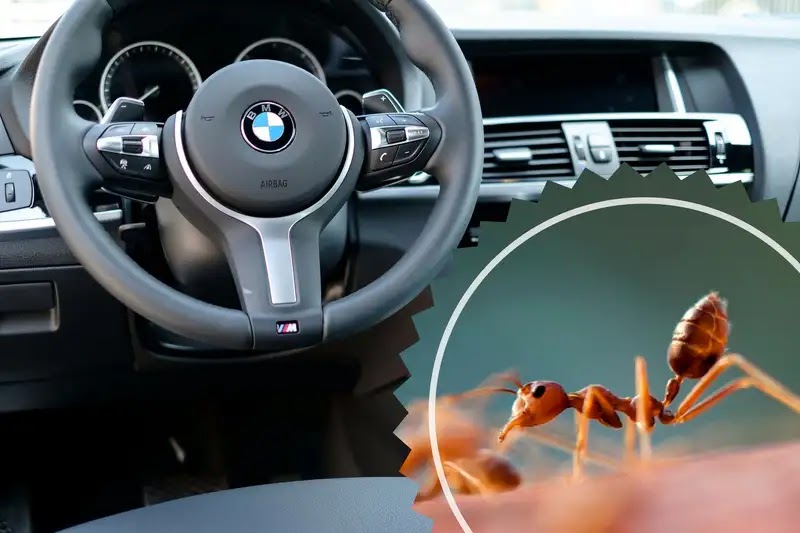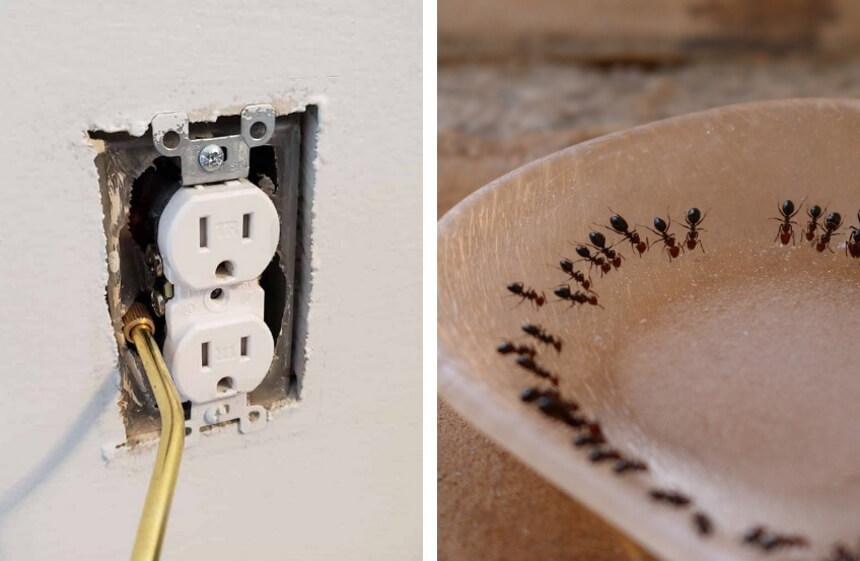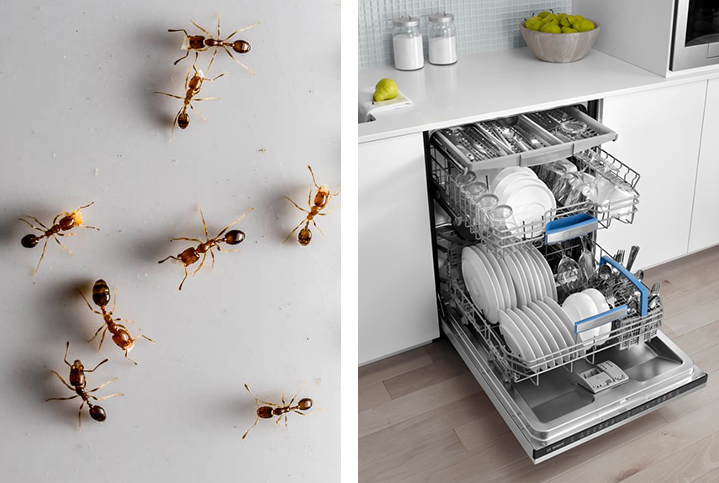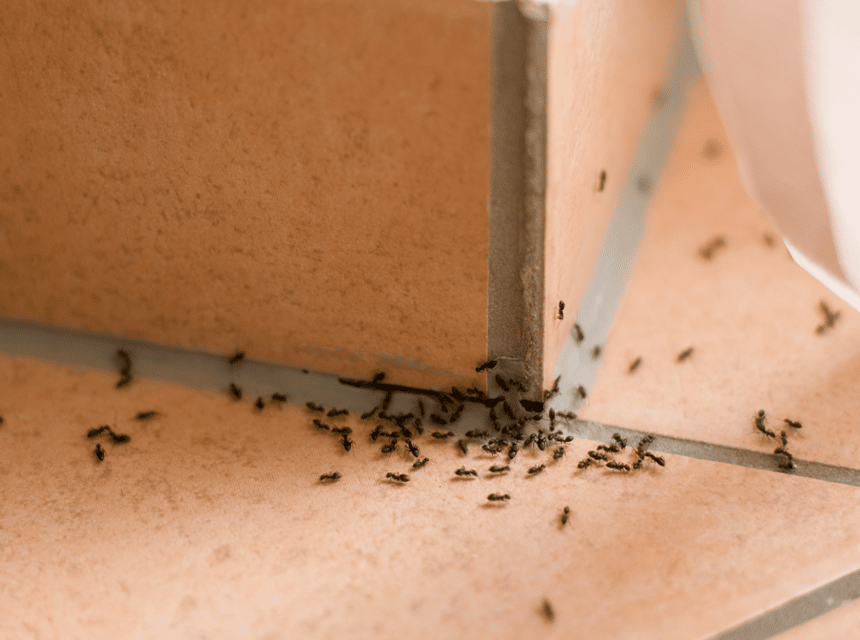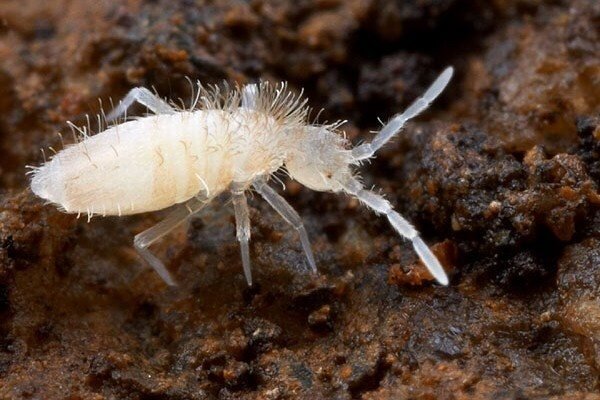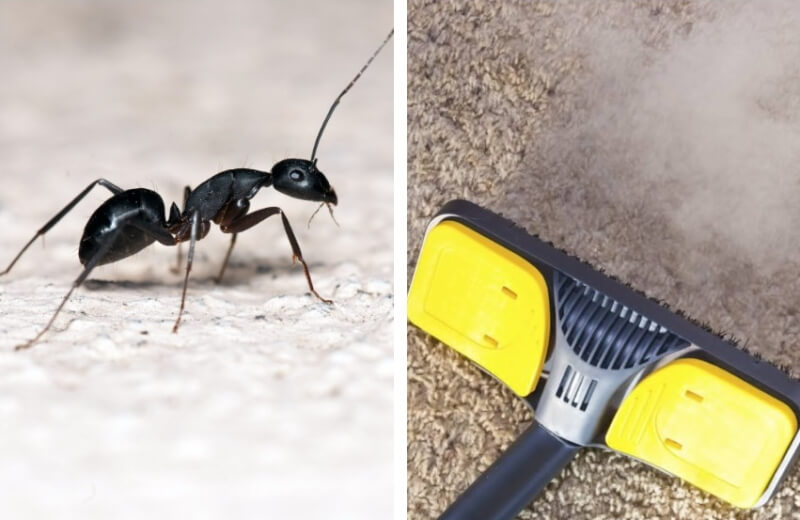

Ants on the ceiling is not an entirely new phenomenon. In fact, it’s something that humans have had to deal with since they started building houses. This is especially true for carpenter ants that have the grippy hairs, suction feet, and claws to grip and walk on your walls until they reach the ceiling. They’re a lot like termites in that they like wood and hence may move permanently into your ceiling if you let them. There’s also the risk that if the population is large enough, they might start falling on you or your fittings and make the house uncomfortable to live in. However, in the same way, we have roach killers to kill cockroaches, there are various ways to get rid of the ant population on the ceiling.
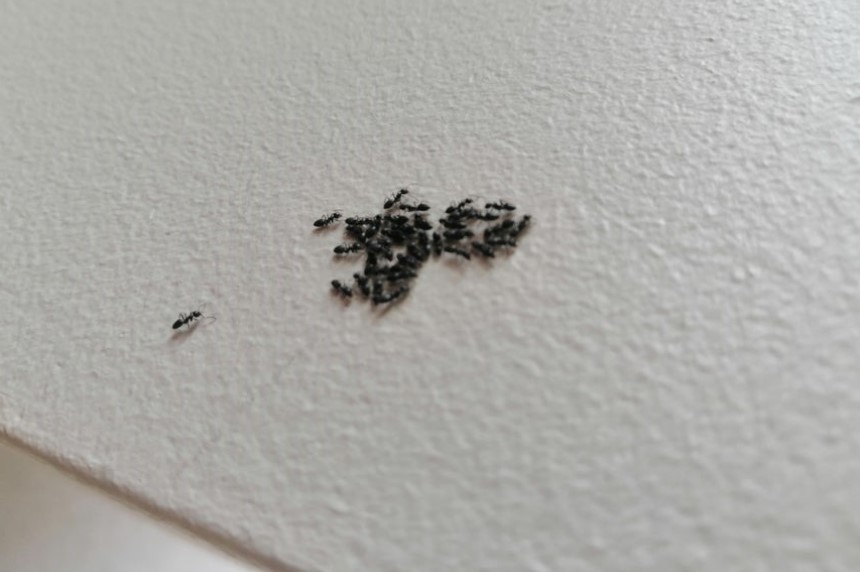
However, unlike the termites, these insects don’t eat the wood. Instead, they chew on it, create holes, and may eventually come to build entire colonies in the wood without your knowledge.
It may be easier to deal with other insects such as wasps using wasp foggers since they’re more conspicuous. However, it’s a little more complex for carpenter ants since they’re smaller and harder to see unless the population in the ceiling is already fairly large.
Some people think carpenter ants are harmless because they’ve lived with them for years in their houses without any repercussions. However, this is simply not true.
Since they don’t eat the wood, the damage to the wooden structures in your ceiling may be minimal at the beginning of the infestation. However, if you leave them there long enough, they’ll reproduce, multiply, and eventually burrow deep enough into the wood while building their colonies to cause structural issues.
Also, as mentioned above, if the population is large enough, they might start to fall on you as you’re sleeping, eating, showering, or doing other activities around the house. They generally do not bite but having them fall on you is still a scary thought.
If you’ve ascertained they’re on your ceiling, the best thing to do is get rid of them. As for the how, here are a few tips.
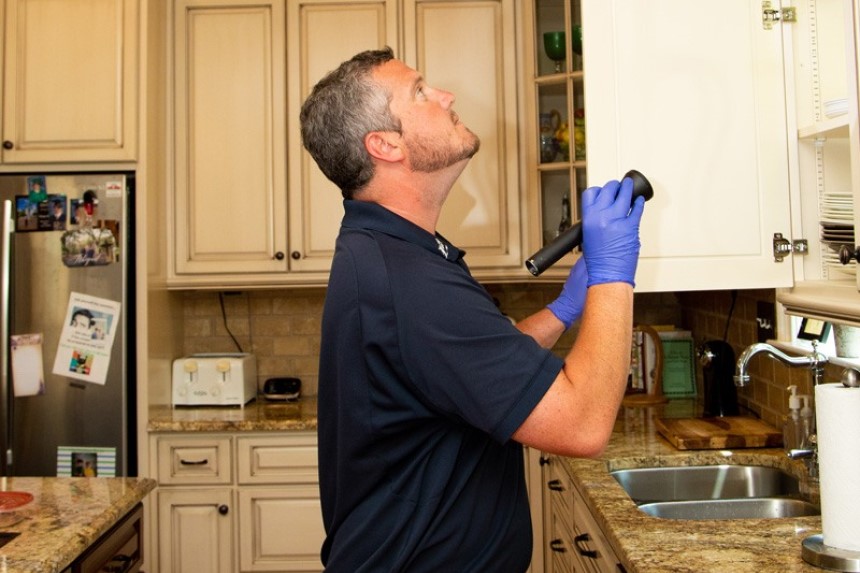
They generally prefer sweet sugary foods, and one of the ant routes will likely lead straight to the kitchen or pantry. Also, according to the University of Minnesota Trusted Source Carpenter ants | UMN Extension Identification and control of carpenter ants in and around the home extension.umn.edu , the worker ants, which you’re likely to see more of, range between 3/8 to 1/2 inches in size. As such, they can fit through tiny spaces, and that may be how they found their way into your house.
Let’s not forget they prefer damp wood to build their homes, and it may be necessary to check your ceiling for water damage, leaks, and high moisture levels. Besides, you won’t know the scope of the infestation until you take a careful look at the colonies in the ceiling.
This will also give you a better idea of what steps to take, including repairing your ceiling if necessary.

Sprays are fast-acting solutions that kill the carpenter ants within minutes. As such, they’re great for the ant routes that are out in the open. Users recommend the EcoRaider Ant Killer as one of the most reliable ant sprays in the market. It’s toxin-free, kills the ants in a minute, and even breaks down their trails to keep them from re-grouping.
Ant baits are a more permanent solution since they ensure the whole colony is decimated. According to users, the Raid Max Double Control Baits are effective enough to eliminate the carpenter ant population in a matter of days. There are two types of baits in the package that the ants eat and take back to the ceiling, therefore, eliminating the whole colony. However, unlike foggers for spiders, dust mite sprays, or other fast-acting insecticides, the death of the insects isn’t immediate.
Notably, it’s not a good idea to mix baits and sprays as the ants will avoid any areas with the spray.
Of course, once the ants are dead, you’ll need to clean them out and block the inlets into the ceiling as well. After that, always ensure the ceiling is well maintained, you keep your home clean, and all your sweet foods are well stored to prevent future infestation.
Also, check the holes left on the wooden beams by the ants. If they’re fairly large, consider replacing the beams altogether. It may be an expensive undertaking, but it’s better than having your ceiling cave in due to a lack of structural support.
If you catch the infestation early enough, getting rid of the ants on the ceiling should be a cakewalk. However, most people don’t realize it until the ants have been in their homes for at least a couple of weeks. Consequently, random inspections and cleaning sessions should be a regular occurrence to stave off the carpenter ants and other bug infestations.
